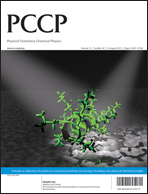On the chemical bonding features in boron containing compounds: a combined QTAIM/ELF topological analysis†
Abstract
The nature of chemical bonding in four classes of boron-containing compounds has been investigated using two topological approaches: the “quantum theory of atoms in molecules (QTAIM)” and “electron localization function (ELF)”. It has been shown that the bonding in these compounds could be described in terms of familiar schemes (covalent single, double or triple bonds, dative bond, etc.) and be rationalized from the QTAIM tools. The ELF analysis is the bridge between two worlds: classical donor–acceptor and delocalization in the one hand, and the quantum chemical concepts obtained from the charge and its Laplacian topology. Particularly, we have shown that: (1) in the case of boron–boron bonding, although the V(B,B) basins are similar to the V(C,C) ones, but the V(B,B) population is always smaller than the corresponding V(C,C). (2) In the planar tetracoordinate boron species, each boron atom is characterized by three chemical bonds despite four neighboring atoms. (3). In the [RuH2(η2:η2-H2BMes)(PCy3)2] compound, the B–Ru bonding belongs to the closed-shell interaction, and there is no BCP between the hydrogen bridge atoms (HB) and the ruthenium center despite the close contact of the atoms. (4) In the case of the XH⋯M⋯HX hydrogen bonding, we found a complex bonding mode involving not only the two hydrogen atoms, but also the two boron atoms. The presence of an RCP in the center of the B–H–Cr–H–B five-membered cycle confers to the compound the potential to evolve under perturbation.


 Please wait while we load your content...
Please wait while we load your content...